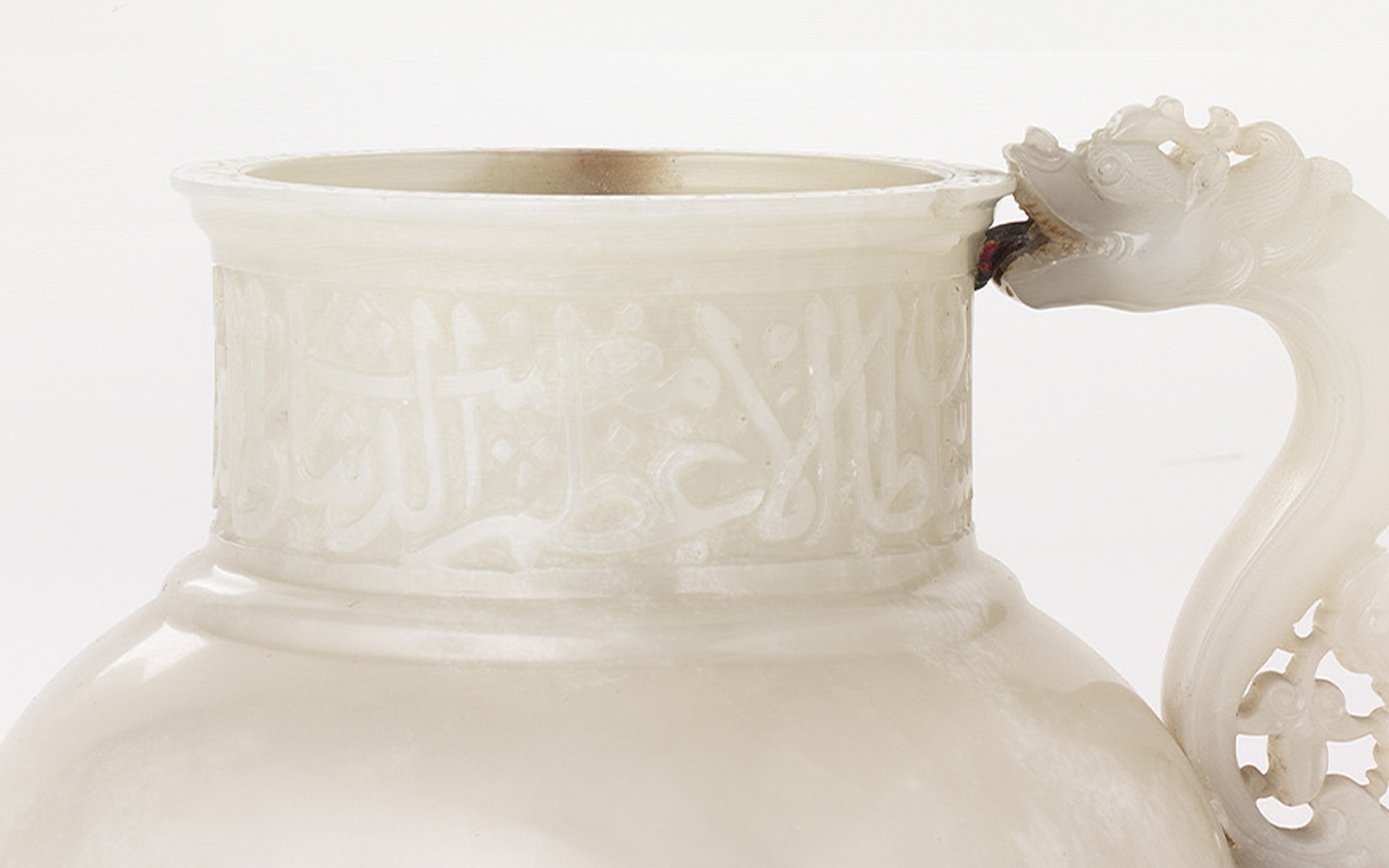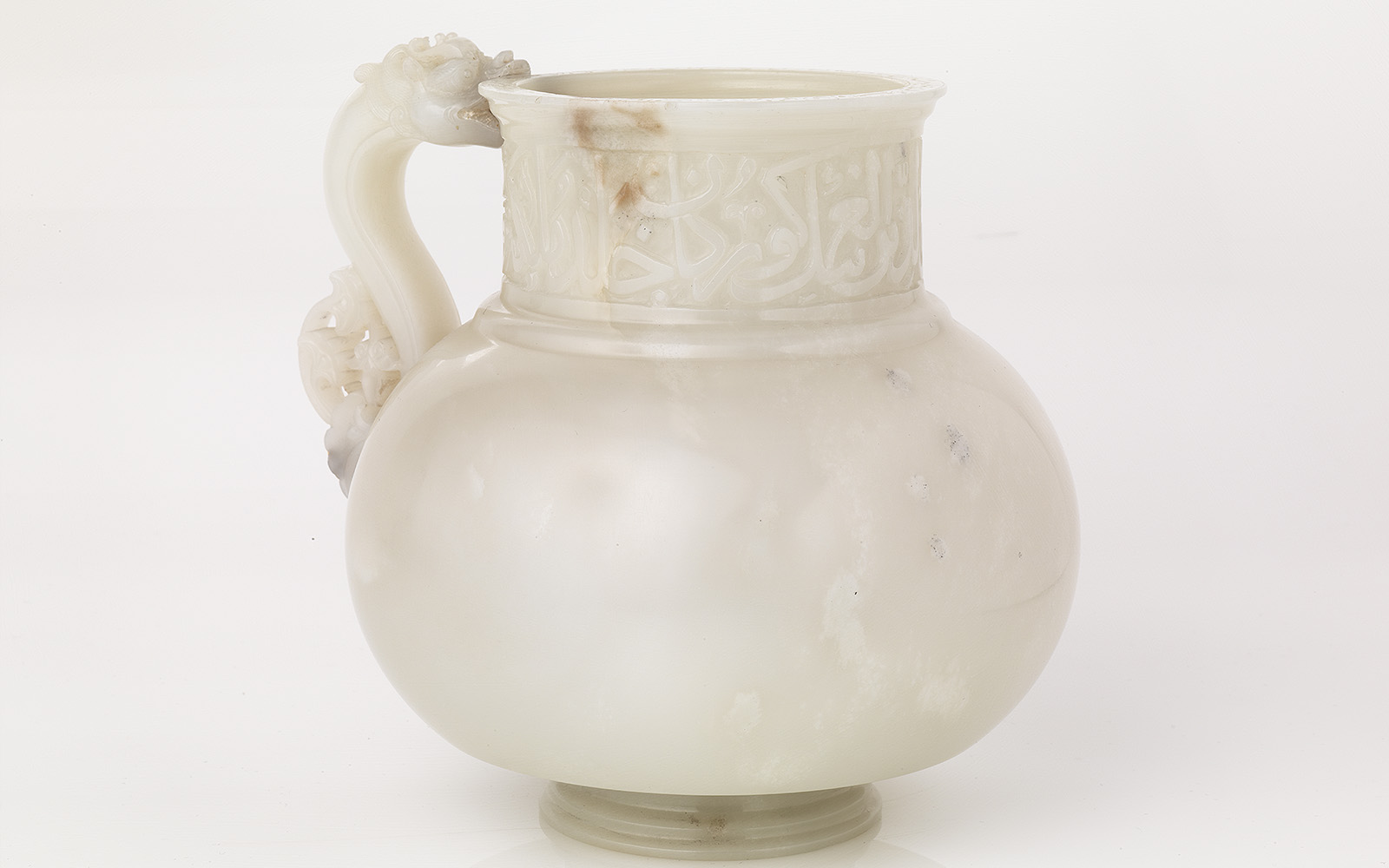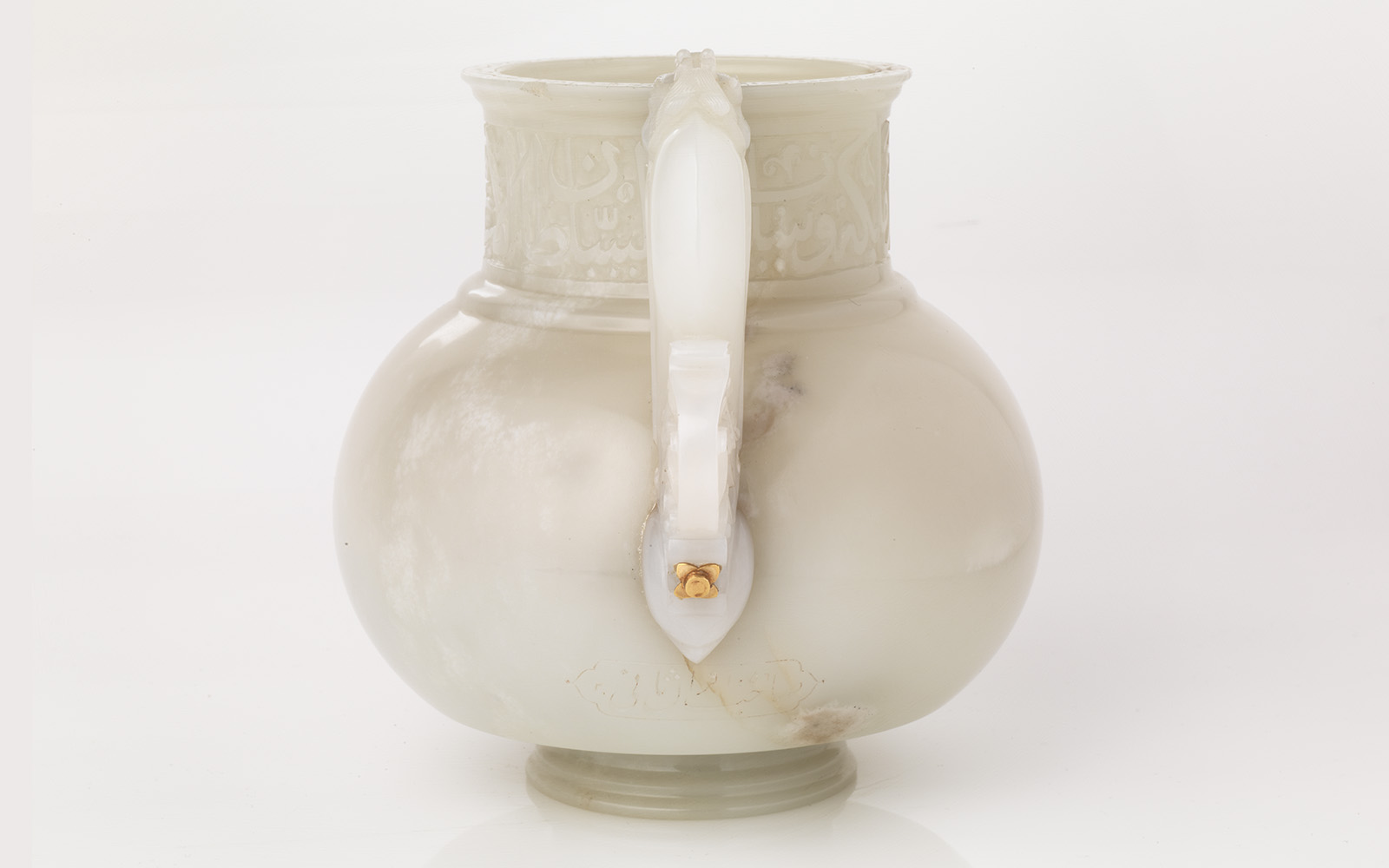Ulug Beg’s jade jug: the ‘Gurgan’ and its heritage

The white jade jug (mashraba) that belonged to Ulugh Beg – son of Shah Rukh and grandson of the great Timur Lang – is a unique piece in the Islamic collection of the Gulbenkian Museum, partly because it is the only one made from this material and partly because of its shape, which reproduces a type of bronze vessel common in the Khorasan – a vast region of central and northern Asia, including parts of Afghan and Iranian territory – frequently decorated in silver or gold. This jug is thought to have been part of a set of twelve jade pieces produced for Ulugh Beg between 1417 – the year in which he assumed the title of Gurgan (or governor) – and 1449, the year of his death, and, as a masterpiece of Timurid decorative arts, it also reveals Ulugh Beg’s sophisticated taste and his preference for precious materials.
Jade was considered a noble stone with talismanic powers, by both the Mongols and the Turks, and was mined in the Kunlun mountains (today in the Chinese province of Xinjiang), to the west of Samarkand. It had a long tradition in the Chinese decorative arts (well represented in the Gulbenkian Museum collection), but it was an exceptional material – and for that reason highly valued – for the Timurids, who promoted its use in rare decorative pieces.
One of the more sophisticated and original elements of this piece is the handle in the shape of a dragon – a recurring theme in Timurid art – finishing in a floral element, all of which was produced independently of the body of the jug, to which it was carefully attached with gold rivets. The chronology of the two pieces has raised some discussion, splitting authors into two camps: those who point to the contemporaneity of the jug and its handle – although this was made from a slightly different, whiter jade that is more highly polished – and those who claim that the handle is a slightly later addition to the pre-existing vessel. The fact that the floral border on the handle rests on what seems to be a bird’s head – probably a falcon, common in Sasanian art – seems to attest to a different workshop and chronology for this element of the piece.




The place of production of the jug is also a source of debate, dividing authors between a Persian workshop, the Afghan city of Herat or, the most likely case, the major city of Samarkand, Ulugh Beg’s capital, in central Asia, one of the most important metropolises – in political, economic, cultural and artistic terms – of the Timurid period. The handle appears to have been produced in a Persian or Hindustani workshop.
The jade jar has three inscriptions in different locations, the most important naturally being that which can be read in relief on the neck, in Arabic thuluth calligraphy, referring to its commission by Ulugh Beg; the second is on the rim of the vessel, carved in taliq calligraphy and dated 1613, with the name of the Mughal Emperor Jahangir, who acquired the jug and later passed it on to his son Shah Jahan, who was responsible for the third inscription made below the handle. The Mughal Emperors – and Shah Jahan in particular – asserted their Timurid inheritance, competing with their ancestors in order to justify their dynastic ambitions.
Jorge Rodrigues
Curator at the Calouste Gulbenkian Museum